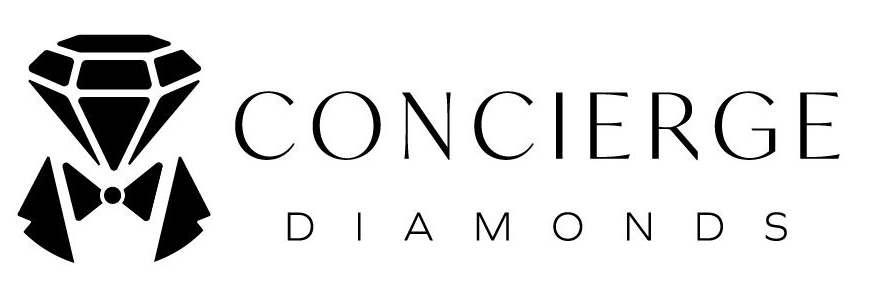Types of Diamond Shapes
There are many types of shapes for diamonds, so how do you tell them apart and how do you know which one is right for your ring? Well, don’t worry, we’ll walk you through the main diamond shapes and the relevant points of each one. That way you’ll be able to select the perfect diamond shape for your engagement ring or custom piece of jewelry.
What’s the Difference Between Cut and Shape?
You might see the terms diamond cut and shape used interchangeably, but they are actually two different things. Shape is the outside form of the diamond, which we are going over on this page. Cut is how a diamond is faceted and proportioned to reflect the maximum amount of light through the stone. You can learn more about diamond cut by visiting our Four C’s of Diamonds page.
Round Diamonds
The round diamond is by far the most popular diamond shape for engagement rings, and is more than 40% of all diamond engagement rings sold. The round diamond is generally superior to other shapes due to its ability to return light—a round diamond will produce more brilliance versus other shapes of stones. Typically because round diamonds have high production costs, they tend to cost more than other shapes.

Oval Shaped Diamonds
Oval diamonds tend to face up very large if they are cut properly. This means that if you placed a 1 carat oval next to a 1 carat round, most people will say that the oval looks bigger than the round, even though the two stones are the same weight. Ovals are difficult to cut, so that makes it scarce and therefore desirable. The cost of any diamond is driven by demand, and the demand for this stone is high. Those looking to impress should consider an oval shaped stone for their engagement ring.

Pear Shaped Diamonds
The pear shaped diamond is brilliant and a combination of a round diamond and a marquise shape. While it can be worn either way, most women wear the pear-shaped diamond with the pointed end pointing away at the hand of the wearer because it elongates the hands and fingers creating a more elegant look. With pear shaped diamonds, buyers need to be aware of the “bowtie” or “butterfly effect”. This occurs if the stone is not cut correctly, and dark spots will appear in the stone. These are not inclusions, but less-reflective facets because the stone is incorrectly cut. This also occurs in marquise diamonds and oval shaped diamonds.

Cushion Shaped Diamonds
Cushion shaped diamonds have a classic, vintage, old Hollywood look to them. There are actually two kinds of cushion shapes: cushion brilliant and cushion-modified brilliant. Of these two, the cushion brilliant is by far the more valuable, more rare and more sought-after of the two shapes. It uses fewer, larger facets than the modified , giving it a more elegant and old-world appearance. Many cushion-modified brilliants suffer from a “Crushed Ice” look: there are so many facets at so many different angles that the stone looks busy, like crushed ice. Cushion brilliant can be about 15% more expensive than cushion-modified brilliants.

Princess Shaped Diamonds
The princess diamond is one the more popular diamond shapes for engagement rings. This type of shape is known as a brilliant cut, as opposed to a step cut. This shape is the most efficient to cut, meaning you lose the least material of the rough diamond. This helps to keep the cost of a princess shape below that of a round diamond.

Marquise Shaped Diamonds
The marquise diamond is an oblong shaped diamond, like a football. It’s a brilliant cut diamond and often gives the illusion of a greater size. The shape originated in the court of King Louis XIV of France and is called the navette, or “little boat”. The marquise diamond has one of the largest surface areas of any diamond shape, making it a good choice when trying to maximize perceived size.

Emerald Shaped Diamonds
The emerald diamond is a step cut and produces a hall-of-mirrors effect. Because of the nature of the emerald cut, inclusions in the stone and the body color are easier to see than in other shapes. If you like the glassy, large facet, classic, old-world look, an emerald is the shape for you.

Asscher Shaped Diamonds
The asscher diamond is similar to the emerald shape and is also a step cut diamond. While the emerald cut is rectangular, the asscher shape is square. The technical name for the asscher is the “square emerald cut”.

Radiant Shaped Diamonds
The radiant shape results in a brilliant-cut diamond that looks like a square with the corners polished off. Radiant diamonds are known for their brilliance as they have multiple facets that return light reflected in the stone. It’s a contemporary looking gem, and is a popular choice for a center stone. Radiant shaped diamonds can also suffer from the “Crushed Ice” look, like cushion cut diamonds. The corners of princess shapes can be very susceptible to chipping, but the radiant shape does not have that problem. The radiant shape also differs from the princess shape in that it has a different facet pattern.

Heart Shaped Diamonds
The heart shaped diamond is a brilliant cut diamond. It’s popular as a solitaire, ring or pendant and as a symbol of love.

Watch the video below for more on diamond shapes!
